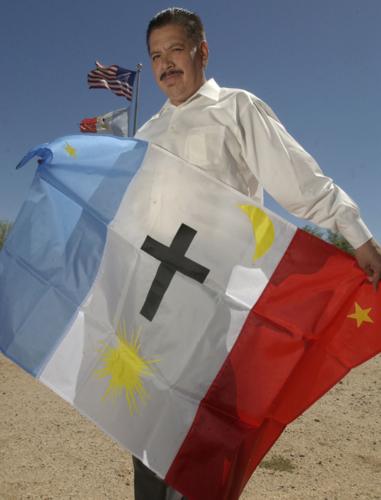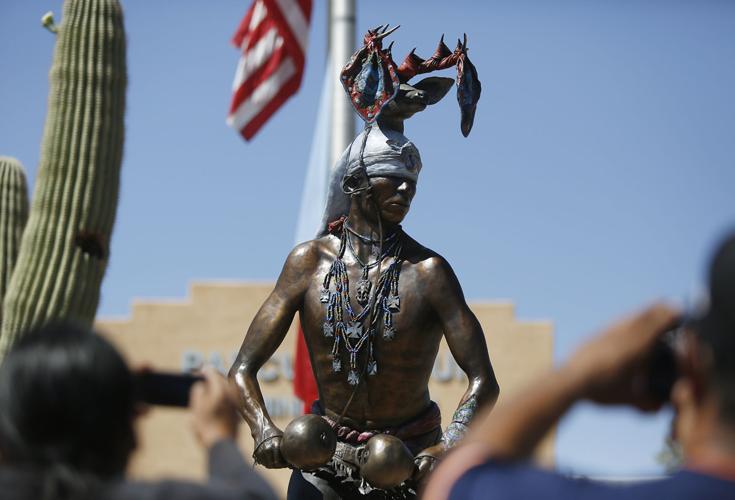By all accounts, and there were many, the road from genocide to independence was a long, arduous and seemingly impossible journey for the Yoeme people.
But the proud and defiant Yoeme, commonly known as Yaqui, overcame insurmountable obstacles from the nightmarish years in their native Sonora, Mexico, to their exodus to Tucson and nearby communities, to the day on Sept. 18, 1978, when the U.S. government recognized the Pascua Yaqui of Arizona as a federally recognized tribe.
In celebration the Pascua Yaqui Nation will sponsor History Nights, three lecture presentations on Yoeme culture and history in Tucson, Sept. 17, Sept. 18 and Sept. 21, all open to the public.
Federal recognition came after years of efforts led by Anselmo Valencia Tori, the tribe’s elder and former chairman, who died in 1998. The official recognition gave the Pascua Yaqui similar status to other Native American tribes.
But the Yoeme did not need official tribal recognition to legitimize their presence and cultural contributions.
“Our contribution has been the ability to carry on our culture,” said Amalia Reyes, supervisor of the Dr. Fernando Escalante Community Library and Resource Center on the Pascua Yaqui reservation southwest of Tucson.
The most recognizable cultural feature is the Yaqui deer dancer, which is incorporated into the tribe’s logo and central to the annual Lenten ceremony of dancers — Fariseos, Chapayekas, Matachinis — the re-enactment of the Passion of Christ in song and dance. The Easter-time ceremonies, hundreds of years old, mix Spanish Christian teachings and ancient Yaqui traditions.
Yaqui history and culture stretches to southern Sonora where the Yoeme inhabited various communities along and near the Yaqui River where Ciudad Obregón exists today, about 300 miles south of Tucson as the crow flies. While southern Sonora was the center of Yaqui life and culture, in precolonial days they had traveled beyond the Yaqui River to other areas, including Southern Arizona.
When the Spanish colonizers, soldiers and priests arrived to the Yaqui River in the early 16th century, the eradication of the Yoeme began. The newcomers cherished the fertile land and, later, the silver discovered in the area.
The Yaquis fiercely resisted. Those who weren’t slaughtered were shipped away to other parts of Mexico to work as slaves. Others fled. After Mexican Independence in 1810, the Yaquis, along with other indigenous people, Mayo and Opata, fought Mexican attempts to steal their ancestral lands, and against enslavement and elimination. Eventually war, famine, disease and deprivation physically vanquished the Yaquis. But the Yoeme say they never surrendered.
As the 1800s came to an end, the Yoeme, from the young to the old, began leaving in larger numbers. They walked to Southern Arizona for safe haven and established communities in Tucson, Marana and Guadalupe. In Tucson, the Yoeme settled largely north of town, near today’s intersection of West Grant and North Oracle roads, today called Old Pascua Pueblo. Pascua, Spanish for Easter, was officially named on Easter Sunday, 1921.
Other Yaquis made their homes in Barrio Libre in South Tucson and in Marana. And many Yaquis who live on their ancestral homelands continue to resist encroachment of their lands and the stealing of their water rights by the Sonoran government and land barons.
While the Yaqui found refuge in Arizona, they encountered hardship, poverty and discrimination. But they persisted. In 1964, with the help of Congressman Morris K. Udall, the Yaqui received 200 acres which has become New Pascua Pueblo and where the tribal offices, homes and the Yaqui-owned Casino del Sol are located.
The Yaqui community has contributed greatly to Tucson’s culture and history. Yaqui elders who were laborers have seen their children and grandchildren attend college and join the professional ranks. And the Yaqui tribe is a big employer in the Tucson area through its Casino del Sol.
The History Nights presentations will remind us of their role in our history and share with us the Yoeme story.
Said Reyes: “Our contribution is the tenacious belief in ourselves.”








